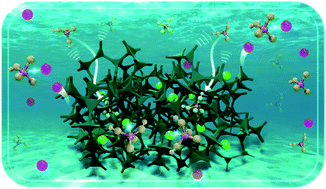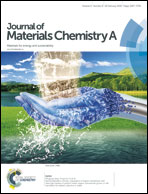Carbon transmission of CO2 activated nano-MgO carbon composites enhances phosphate immobilization†
Abstract
Nano-MgO carbon composites (MCs) demonstrated great potential in phosphate immobilization to resolve phosphorus reuse and eutrophication problems, but the mechanisms of phosphate immobilization are still unclear. In this study, MCs were fabricated via CO2 activation of hydrochar materials, and the activation mechanisms were first investigated through analysis of pyrolysis gases and porosity. The results indicate that MgO particles (pyrolysis products of MgCl2) catalyzed the consumption of the carbon matrix but blocked the development of carbon matrix pores. Furthermore, phosphate immobilization by MCs increased with the increase of MgO loading content. More importantly, XPS and TEM-EDX profiles demonstrate that solution and surface precipitations regulated phosphate immobilization by MCs. Solution precipitation mainly contributed to a MgHPO4 precipitate, while in surface precipitation the carbon matrix served as a bridge for H2PO4− transmission to MgO particles to produce a Mg(H2PO4)2 precipitate. Also, with the decrease of carbon content, surface precipitation became dominant due to the shortened distance. This contributes to the improvement of phosphate immobilization by MCs, which was found to be even higher than pure MgO. Compared with N2 activated MC, CO2 activated MC showed much higher phosphate immobilization potential attributed to the surface precipitation reaction. The results of this study will guide the development of more efficient MC materials for phosphate recovery.



 Please wait while we load your content...
Please wait while we load your content...